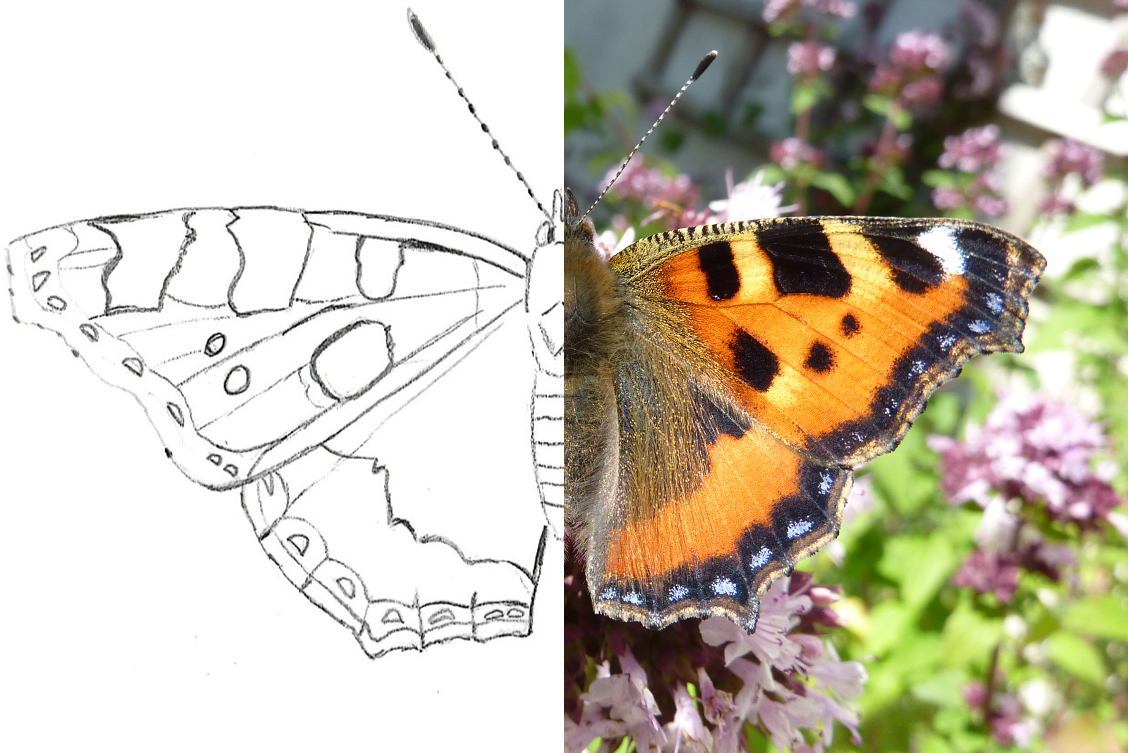
Take Me to the River: WATER_CONNECTIONS_LIFE CYCLES
Location: Swift Cultural Centre and Porchfield, Trim
Date: Saturday 9 August
Time: 10am - 2pm
Price: Free, booking essential
Participants: All ages
Click here to find out more about Take Me to the River.
This workshop focuses on interconnections between biodiversity and river health. Beginning in Swift Cultural Centre, explore a large collection of mounted and live butterflies and moths with Jesmond Harding of Butterfly Conservation Ireland. Butterflies are key pollinators in healthy ecosystems and their presence or absence helps us study the impact of biodiversity loss and habitat fragmentation.
Walking to the Porchfields, learn about their environment, discovering the river's impact on their habitat. Engage in kick-sampling at the water’s edge with a representative of Inland Fisheries Ireland to study and log the aquatic organisms of the river.
Guided by artist Annabel Potterton and Cineál, use colour and line drawing to capture winged and aquatic sightings, and create imagery to map the biodiversity of this river site.
Workshop participants will contribute to a sectional drawing that narrates the ecosystem from the riverbed to the treetops. This transect study will create an accessible record of the river’s environmental condition, specific to the site, contributing to the ‘Creative Catchment Map’ developed in the project in 2024, to record information, activities and scientific enquiry.
Accessibility: The location of workshop includes grass paths, incline and water’s edge, and semi-rough terrain. Please contact Deirdre before booking so we can assist you with any mobility requirements. Deirdre.rogers@solsticeartscentre.ie
Citizen Science Structured Actions: To study the interdependence between biodiversity and waterway health through kick sampling and species identification. Citizen Science actions, recording sightings to the National Biodiversity Data Centre.
Facilitators:
Jesmond Harding is founding member and Conservation Officer of Butterfly Conservation Ireland, and a member of the Irish Peatland Conservation Council, Burrenbeo Trust. The author of two books, “Discovering Irish Butterflies & their Habitats”, 2008 and "The Irish Butterfly Book", 2021, he has contributed to articles in periodicals including the Irish Naturalists’ Journal, Peatland News (Irish Peatland Conservation Council), Wings (BirdWatch Ireland) and the online nature magazine Wildlife Extra. He featured in the third series of “Living the Wildlife” (episode 2) and “The Burren: Heart of Stone” (episode 1). Part of the expert group that drew up the red list for Irish butterflies in 2010, Jesmond advises on habitat creation and management. Currently involved with several Lepidoptera recording programmes, he is a lead member of the coordination committee for the Butterfly Atlas Project 2010-2021, on the Peatlands National Park campaign group which promotes the establishment of a new national park in Kildare and East Offaly and works with the Burrenbeo Trust to manage limestone habitats.
Butterfly Conservation Ireland (BCI) was established in 2008 by a group of dedicated naturalists following the alarming decline of our butterfly species. Run by dedicated volunteers, they are committed to the conservation of butterflies, moths, and their habitats. Operating out of a nature reserve at Lullybeg, County Kildare in partnership with Bord na Móna, advice and information are given to Government, public and private organisations, the public and individuals concerning butterfly conservation. BCI run a recording scheme and currently involved with the National Biodiversity Data Centre in a joint initiative to develop an All-Ireland Butterfly Atlas.
Inland Fisheries Ireland is the Agency that has the statutory responsibility for the protection, development, and management of Ireland's 74,000 km of rivers and streams together with 128,000 lake hectares. A coastal 12-mile jurisdictional limit is also included. Education and Outreach is an integral part of IFI’s work, engaging in a meaningful way with stakeholders, creating awareness of fish, fishing and their local environment. Through learning they promote conservation, sustainability and encourage environmental stewardship.
Annabel Potterton studied ecology in the mid-1980’s, and throughout her artistic career, uses organic matter as source material for her artworks. Environmentally conscious, her home studio in Co. Meath is surrounded by wild areas to encourage bee and butterfly species. Often painting outdoors ‘Alla prima’ (paint applied to previous layers of still-wet paint), observational drawing is an important part of her practice, connecting to site using quick line and form to create distortions and abstract shapes, capturing an essence of the subject matter “a visual music of colour and shape”. Receiving a diploma from NCAD in fine art, and further studies at the Royal Hibernian Academy, Dublin, she recently completed a two-year mentorship programme with the Turps Banana painting programme in London.
Cineál Research + Design is a collaborative architectural practice led by Phoebe Brady and Sarah Doheny since 2021. The studio explores the experiential qualities of the built environment through a practice of mapping and observation. Their design work and research explores the relationships of materials and ecology in the design and creation of spatial experiences. Cineál identifies as an environmentally sensitive practice where drawing, designing and building processes are rooted in place, connecting local landscape knowledge, ecology, geology, climate and weather.
Working with Solstice Arts Centre on Take Me to the River 2024, they are expanding their collaboration this year, facilitating experimental forms of mapping to understand the iterative ecology between communities and their environments within the project. Introducing sectional drawings for each site to narrate the ecosystem from the riverbed to the treetops, together with workshop participants they will create an accessible record of the river’s environmental condition, specific to a place and time.
They will be guiding qualitative surveying exercises through observation, drawing and listening within each public workshop which will contribute to the ‘Creative Catchment Map’, developed in 2024 to record information, activities, and scientific enquiry.